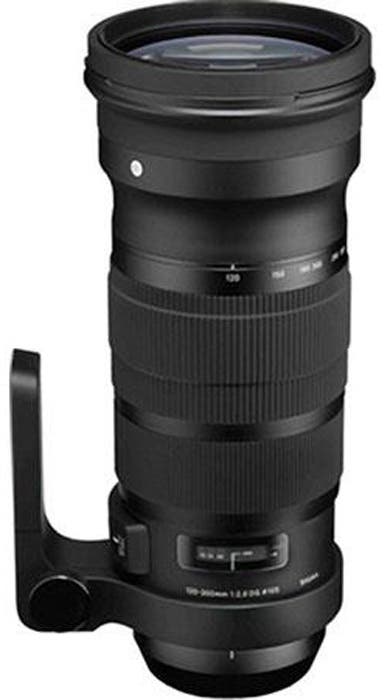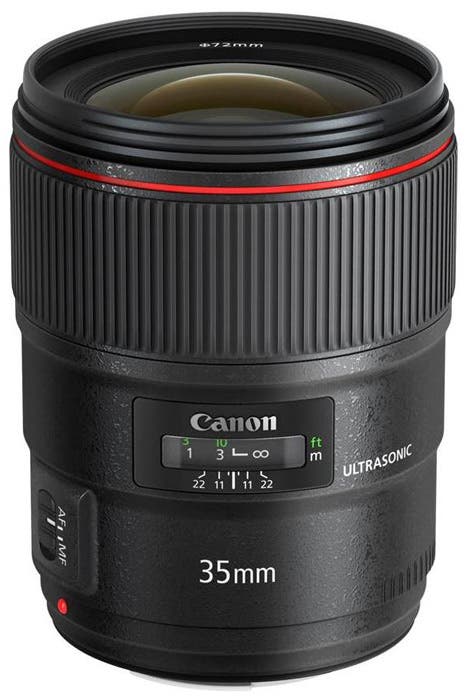There are many opinions on which lens or lenses to take with you when you travel. My philosophy regarding lenses in general is to get as fast and as high quality lenses as you can afford. A high quality lens will be with you significantly longer than your camera body and will retain much of its value over time. When I’m traveling, I pack lenses that will best capture my subject matter, but never more than three as I don’t want to feel like a mule carrying 100 pounds of photography equipment! The lenses I decide to take on my trips are dictated by my destination. The list below has lens suggestions for several traveling categories based on lenses I have used and found to be excellent for the task at hand.
Travel lenses for landscapes and nature trips
For trips where you are primarily trying to capture the grandeur and natural beauty of landscapes and natural wonders a wide-angle zoom or a wide-angle prime will suit your needs best. A wide-angle lens will get as close as possible to replicating what you are seeing IRL (in real life). Humans have a field of view of approximately 114 degrees which is about the same as a 12mm lens on a full frame camera. Now I’m not saying you need to get a camera to match your eyes, but a wide-angle lens will be more effective at helping you capture a stunning panorama and if it is captured under the right lighting, the image can be magical.

Sigma 18-35mm F/1.8 DC HSM ART Lens ()
While I haven’t used this lens yet, I am a big fan of Sigma’s Art lenses and am really excited to getting my hands on this lens. This wide-angle zoom is very fast at f/1.8 and covers a nice focal range of 18mm to 35mm. And while Sigma’s primes are likely to be slightly sharper and lighter, I expect the quality from this lens to be excellent. Check back into the Adorama Learning Center for a review of this lens. I have extensively used several lenses from the Sigma Art lineup including the 35mm listed below. You can read my review here.

Canon EF 16-35mm f/2.8L III USM Lens ()
An extremely sharp and fast wide-angle zoom, the Canon 16-35mm is an amazing piece of glass that is tack sharp and produces great pictures with very solid color reproduction. This is easily one of the best travel lenses in Canon’s lineup.

Tokina ATX-i 11-16mm CF F/2.8 Lens ()
This lens is a no brainer for all crop sensor cameras out there. It is a super-wide zoom, has a maximum aperture of f/2.8, has excellent sharpness with minimum distortion and is super inexpensive. Go get this lens! This lens even works with full frame sensors when zoomed into the 16mm end.
Travel lenses for wildlife, birding, sports events
Your subject is far from you and you want it to fill your frame. Whether you are on safari, at a Nascar event, or just want to capture that woodpecker up in that tree you need a long lens. Below are some of the best long travel lenses for pulling the subject towards you.

Canon EF 300mm f/2.8L IS II USM ()
If you have the cash to outright buy this lens you won’t regret the decision to plunk that much moolah down. This is a monster of a lens that can be handheld in seemingly impossible situations. It is super-sharp, the USM works incredibly well and it focuses very quickly.

Canon EF 70-200mm f/2.8L IS III USM Lens ()
This is the best telephoto zoom lens you can get. It autofocuses incredibly fast, has a solid zoom range of 70-200mm, is very fast at f/2.8 and sharp even wide open. This is one of my all-time favorite lenses and is even sharper than many telephoto prime lenses.

Sigma 120-300mm f/2.8 DG OS APO HSM Zoom Lens ()
This lens gives you a good amount of extra reach beyond the 200mm range. It is an excellent lens that is very fast with a constant f/2.8 aperture. It has excellent optics and the image stabilization is extremely useful for stopping motion especially at the long end of the zoom.
All-around travel lenses
If your travels will encompass many different shooting situations a versatile lens will help you get the shot whether it is a shot of Mt. Fuji or the running of the bulls in Pamplona (from an elevated position I hope!). For all purpose photography I primarily use a 35mm lens. In the section below I will examine some excellent 35mm lenses and why you might want to consider just using one lens to shoot nearly all your photos. Below are some of the excellent all-purpose zoom lenses I have worked with.

Canon EF 24-70mm f/2.8L II USM Lens ()
The 24-70mm f/2.8L II USM is the king of wide to medium zooms. I often only take this lens out with me when I shoot. If you have a full frame camera, and a large lens budget, you would be well suited getting this lens as well as the 70-200mm f/2.8L IS II USM from above in the in the Wildlife, birding, sports events section above. These two lenses cover 24-200mm at f/2.8 and are an incredible pair of lenses that are fast, sharp and cover you in nearly all situations.

Canon EF 24-105mm f/4L IS II USM Lens ()
If you want to carry one lens around and won’t be encountering many dark situations this lens is a great go-to lens. From 24-105 is a lot of coverage for one lens, especially when you consider the quality of this lens. This lens is also a bargain for the quality. This should definitely be considered even on an APS-C sensor.
35mm as a go-to lens
While most traveling requires a bit of flexibility for the variety of shooting situations you may face, there is a case to be made for just carrying a fast 35mm lens. If you are on a tight budget, don’t want to change lenses, and aren’t shooting anything very far away such as a lion, using a 35mm lens as your only lens can be a very solid choice. You can also invest more money into a great 35mm lens and get tack sharp pictures, rather than covering a spectrum with several lenses that would invariably cost more.
Many highly regarded photographers believe in the practice of mounting a high quality 35mm lens to your camera and leaving it attached.The idea is that limiting yourself to one focal length will make you work on your composition and angles and the make you move your feet to reframe your shot. Shooting in this manner leads to a consistency in the look of your pictures and makes you think more when shooting. And when traveling, using one lens keeps your kit lighter and makes life simpler by not carrying, much less changing, lenses.
I believe a 35mm lens is slightly better suited to be your go-to lens than a 50mm as the slightly wider perspective it allows you to get more of a scene in the shot and it is more versatile in tight spaces.

Sigma 35mm f/1.4 DG HSM ART Lens ()
Sigma makes a phenomenal fast 35mm full frame lens, the Sigma 35mm f/1.4 DG HSM ART Lens is available in several mounts. I have previously reviewed this lens and absolutely loved it. This will be my next lens purchase.

Sony Distagon T* FE 35mm F/1.4 ZA Full Frame E-Mount Lens ()
If you have a full frame Sony camera, the offering from Zeiss is a top of the line lens that is incredibly sharp and very fast. This lens with the a7s in particular is an amazing low light combo.

Canon EF 35mm f/1.4L II USM Lens ()
The Canon EF 35mm f/1.4L USM is another phenomenal lens from Canon. This extremely sharp, very fast lens is many photographers’ go-to lens. While I favor the 35mm f/1.4 from Sigma for its sharpness and price, the build of this lens is clearly superior. Definitely a lens to look at if you are in the market for an amazing 35mm lens.
Final note
While this article’s focus is on lenses it would be a crime to neglect suggesting some accessories that will help you get the most out of your lenses and make your travel photos shine. I could (and very well may!) write an article just about great photography accessories, but for now I will just promote the top two accessories I think will help you in your endeavors to get amazing photos.
Travel tripods
A good tripod will help you get a shot that you might have otherwise missed — check out our list of top travel tripods for any budget. If there isn’t enough light for handholding and your subject matter is static, a tripod will keep your subject sharp. If you want to capture the passage of time such as having the sky or moving water look surreal a tripod is key. If you want to take a selfie without the stick, a tripod and a timer are your best friend. There are tons of tripods for all types of situations from many different manufacturers. Just keep in mind that the added weight, especially when traveling may not be welcome, but when you need it a tripod will come in extremely handy and you’ll be grateful you brought it along.
Filters for travel photography
There are a few filters whose effects cannot be reproduced in post. These filters allow you to make marked improvements to your shots by adjusting how the light gets to your lens and through to your sensor. The two most useful filters you can carry are a polarizing filter and a graduated neutral density filter.
But the most important part of any trip is not the pictures you capture. Always remember to put the camera down every so often and use your mental camera to just live in the moment!




